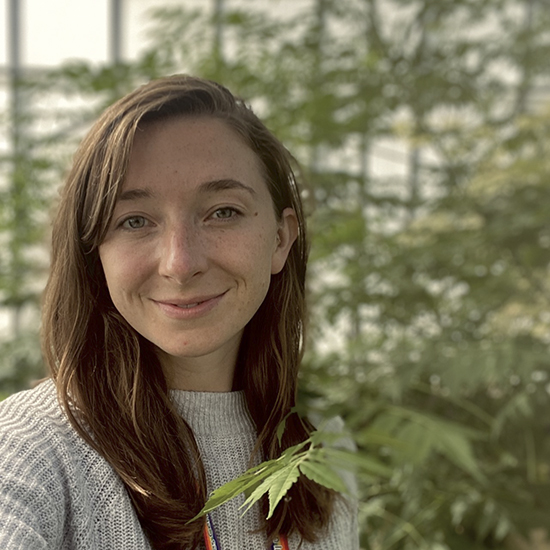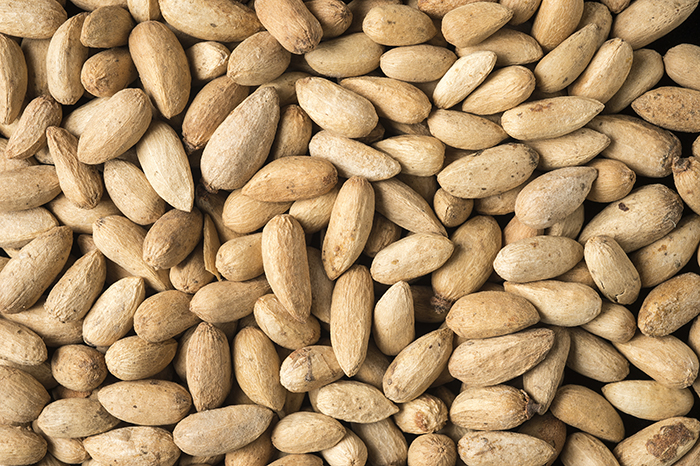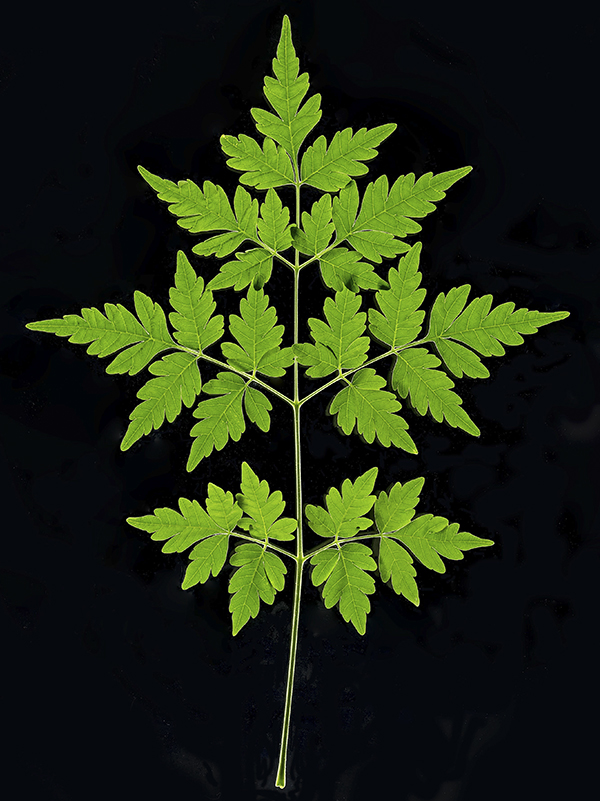
Limonoids’ Secrets Revealed - a Breakthrough Discovery by Dr. Hannah Hodgson and Her Collaborators
A joint research team from the John Innes Centre and Stanford University has recently revealed the complete enzymes required to make limonoids, published in Science. Limonoids can be found in Mahogany and Citrus plants. They are widely used as a biopesticide, but their biosynthetic pathway was unclear before this study. The team discovered and identified 22 enzymes involved in limonoid biosynthesis, which can catalyze 12 different enzymatic reactions, revealing the complete biosynthesis pathway of limonoids.
Limonoids, a type of triterpene, have a wide range of scaffold modifications, resulting in a wide range of biological activities and structural diversity. With this complete biosynthesis pathway, the team has easy access to limonoids which paves way for further study. In addition to biopesticide, the team hopes to produce a high-value limonoid that is the anti-cancer drug candidate nimbolide.
We are excited to be able to interview Dr. Hannah Hodgson, co-first author of the paper, and a postdoctoral scientist at the John Innes Centre. In the following interview, Dr. Hodgson explained in detail how they made this remarkable breakthrough and the profound implication of limonoid’s clinical application and biological research.

Q: Congratulations on your recent article published in Science magazine revealing the secret of how plants make limonoids which have the potential as anti-cancer drugs. First of all, please share with us your educational and training backgrounds.
A: I completed my molecular biology undergraduate degree at the University of Exeter (UK). This was a broad degree ranging from biochemistry to marine biology and included a year studying at the University of Queensland (Australia), which I loved and really opened my eyes to how interesting and diverse research on plant and crop science is. After this, in 2015, I briefly worked as a healthcare science assistant in an NHS sequencing lab in Birmingham (UK). Then I moved to Norwich (UK) for my Ph.D., which I completed in 2020 on limonoid biosynthesis at the John Innes Centre (JIC), (in Prof. Anne’s Osbourn group). It has been a fantastic project to work on, as at the start of my Ph.D. the pathway remained completely uncharacterized. Therefore the breadth of the project has enabled me to be trained in a huge number of different skills as the project has progressed.
Q: Please tell us more about this research which was published in Science.
A: Limonoids are a type of chemical (or a plant natural product) made only by plants belonging to either the Mahogany or Citrus families. Our work in Science explains how we have now found and characterized all of the enzymes (biological machines) required to produce simple limonoids, like azadirone (from the Mahogany family) and khidalactone A (from the citrus family). There were 22 new enzymes described in this paper, 12 from Citrus and 10 from Mahogany, some of which perform novel chemistry. For instance, we found for the first time that enzymes that are involved in very conserved sterol primary metabolism have evolved in Mahogany and Citrus to play a key role in limonoid biosynthesis via conducting scaffold rearrangement. The work on the Mahogany family was conducted by myself, colleagues at JIC, and the Citrus by collaborators at Stanford University. There were many challenges to this work; for instance, before we could find the Mahogany enzymes, we first had to generate a genome and expression data for Melia azedarach, a limonoid-producing tree within this family. With advances in genetic sequencing technology, metabolite analysis, and biotechnology it is now becoming possible to characterize truly complex plant natural product pathways, such as we have done with the limonoids, which even at the start of my Ph.D. in 2016 seemed near impossible.
Q: What is it about limonoids that makes them so interesting?
A: Limonoids are an amazingly diverse group of chemicals (there are over 2,000 identified so far). They belong to a type of chemical known as triterpene, which are multi-cyclic structures that have a 30-carbon backbone. Unlike other triterpenes, the limonoid chemical scaffold is extensively rearranged. In the biosynthesis of limonoids, a furan ring is formed which results in the loss of four carbons, a process that we characterized for the first time in our Science paper. Various other ring openings can occur in limonoid biosynthesis, one of which was also characterized in our Science paper. These ring openings, coupled with extensive oxidation, make up the huge diversity of limonoids that make them so fascinating to chemists. Additionally, many limonoids are bioactive, yet non-toxic to humans, and therefore have current, and potential future uses for humans. The most famous example of this is the mahogany limonoid azadirachtin, from the neem tree. Azadirachtin is a potent insect antifeedant/toxicant that rapidly degrades in the environment and is thought of as bee-friendly. Azadirachtin is therefore a strong crop protection agent and solutions based on neem seeds are used in both traditional and commercial formulations. Aside from crop protection use, there have been a number of potential pharmaceutical uses of limonoids reported, the most prominent being the anti-cancer effect of nimbolide, another neem limonoid.
Q: What methodology and equipment did you use in conducting this research?
A: Firstly, we generated genome and expression data for Melia azedarach (a close relative of neem) using various next-generation sequencing technologies (PacBio, Hi-C, and RNA-seq). Then we utilized these resources to find candidate enzymes that we suspected might be involved in limonoid biosynthesis. To achieve this, we largely used expression analysis (determining how switched ‘on’ or ‘off’ enzymes are across different tissues of a plant). We used the pattern of expression in M. azedarach already established in our 2019 PNAS paper (high expression of limonoid biosynthetic enzymes in the petiole and roots), to find enzymes with similar expression patterns. Once we had our list of candidate enzymes, we cloned them, and then tested different combinations of enzymes using transient expression in a tobacco-like host plant (Nicotiana benthamiana), mediated by a special bacteria ‘agrobacteria’. This system enables the enzymes to be expressed in planta, and for us to easily analyze the activity of these enzymes in a host plant rather than the native plant. Chemical changes caused by these enzymes were analyzed by LCMS (liquid-chromatography-mass-spectrometry). Then finally, via LCMS, we identified a new chemical for which we didn’t know the structure; we performed a large-scale transient expression (using a vacuum infiltrator to speed up this process) and then purified the newly produced unknown chemical structures, mainly using preparative HPLC. Once we had a pure chemical, we could confirm its structure by NMR (nuclear magnetic resonance), which enabled us to confirm the activity of each enzyme.
Q: By revealing enzymes in the complete biosynthetic pathway, what would be the next step in your research?
A: Although we now know the complete biosynthetic pathway to simple limonoids, like azadirone, there are many more biosynthetic steps that are still unknown to reach more complicated limonoids, like azadirachtin. We want to understand these next steps to be able to make more useful/complicated limonoids. Also, as with the 22 enzymes we found in the Science paper, the complexity of the limonoids means it is highly likely we might find interesting and novel enzymes in the remaining pathway to azadirachtin, which makes it a really exciting project to work on. Finally, I am also interested in boosting the yields of limonoids that we can make in our host plant N. benthamiana. With the view that if we can make more limonoids, this could be more useful to industry and humans in general.
Q: How would new production methods be applied that differ from the current ones in extracting chemical compounds from limonoid-producing plants?
A: Currently the only way to access limonoids is by extracting them from limonoid-producing plants. This process is reliant on sourcing large amounts of plant material, e.g., neem seed, which can be difficult/expensive. Further, the structures of most limonoids are out of reach of efficient commercial chemical synthesis due to their complexity. Azadirachtin, as an example, can be chemically synthesized, but the process takes 71 steps and the yield is only 0.00015%. Now that the biosynthetic pathway to simple limonoids like azadirone is known, it could be possible (with some work and optimization) to express this pathway in a host organism (e.g., yeast or tobacco) as an alternative route of production. This wouldn’t be reliant on plant material and with the right optimisation it could provide relatively high yields. Alternatively, it may be possible to engineer crop species to produce their own limonoids, thereby protecting themselves from insect pests, without the need for spraying or other forms of crop protection application.
Q: What other high-value limonoids would you want to develop and why?
A: We are really interested in azadirachtin, and related limonoids like salannin, which could be useful in crop protection. Lots are known about azadirachtin, but not its immediate precursors. Therefore, I am also really interested in these lesser-known intermediates that we might find on our way to azadirachtin. Maybe some of these chemicals, that accumulate at low levels in the plant, could have interesting activities that haven’t been assessed yet. Maybe, if we can understand the biosynthetic pathway to get to azadirachtin, we can assess the bioactivity of less-known limonoids along the way. As mentioned, nimbolide is another really interesting target due to its potential pharmaceutical uses and, in comparison to azadirachtin, is relatively simple!
Q: Besides this research, what other research areas interest you?
A: If I put my love of limonoids to one side, I am fascinated by natural products in general. I think it is incredible how plants, microbes, and even marine sponges can produce such a huge diversity of chemistry, and how extreme the evolutionary pressures must have been for them to evolve to make these. I also find plant-microbe interactions, whether they be beneficial or deleterious, to be extremely interesting. I think symbioses like rhizobia and leguminous plants are really amazing. Again, I find the biological and chemical mechanisms that have evolved around this completely fascinating.
*****
We thank Dr. Hannah Hodgson’s detailed explanation on her research. This major discovery opens the door to many possibilities which we are looking forward to.
